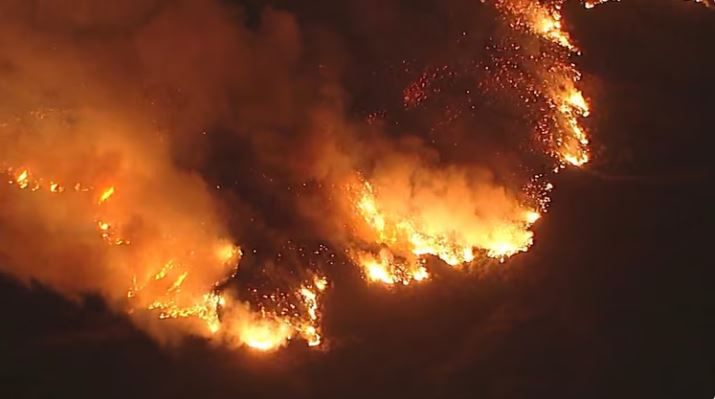Effective Drainage Techniques for Blisters Secondary to Frostbite: A Comprehensive Guide
Frostbite occurs when skin and underlying tissues freeze due to exposure to extremely cold temperatures. It primarily affects areas of the body with less blood circulation, such as the fingers, toes, ears, and nose. One of the most common secondary effects of frostbite is the formation of blisters, which can be painful and, if not managed properly, may lead to infection or further tissue damage.
In this article, we’ll discuss the importance of proper care for frostbite-related blisters and outline effective drainage techniques to ensure proper healing and prevent complications.

What Are Frostbite Blisters?
Blisters that form as a result of frostbite are filled with clear fluid and appear after the freezing of skin and underlying tissue. They may develop within hours or days after the initial exposure to cold and are typically seen in stages of frostbite severity. Early stages, like frostnip, may cause redness and coldness but don’t involve blistering. However, with superficial frostbite or deep frostbite, blistering is more likely to occur.
Blisters are a body’s response to protect the damaged skin beneath, but improper handling of these blisters can lead to infection, delayed healing, or even permanent scarring. Hence, effective drainage is crucial in the management of frostbite-related blisters.
Why Drain Frostbite Blisters?
While it’s natural to want to avoid popping or draining blisters, there are specific circumstances when draining frostbite blisters becomes necessary:
- Excessive fluid buildup: Blisters can become swollen and large, causing discomfort and making it harder to move.
- Risk of rupture: Large, tense blisters are at risk of rupturing on their own, which may increase the risk of infection.
- Prevention of infection: Proper drainage can help lower the chances of bacteria entering the blister.
When Not to Drain Frostbite Blisters
In some cases, blisters should not be drained. This is often true for small blisters that are not causing much discomfort or when the area of skin beneath the blister is still intact and not heavily damaged. Draining these blisters prematurely may expose the area to infection or slow down the natural healing process.
How to Properly Drain Frostbite Blisters
If draining the blisters is necessary, it is important to do so in a clean and controlled manner. Below are the steps to safely drain frostbite blisters:
1. Assess the Blister
Before attempting drainage, carefully examine the blister. If it’s small and intact, you may decide to leave it as is to protect the damaged tissue. However, if the blister is large, tense, and causing pain, it might need to be drained to reduce pressure.
2. Cleanse the Area
Before performing any procedure, make sure the area around the blister is clean. Wash the hands thoroughly with soap and water. Then, clean the area of the skin around the blister with mild soap or an antiseptic solution, such as hydrogen peroxide or iodine-based antiseptics. Avoid using alcohol, which can irritate the skin.
3. Sterilize the Drainage Tool
A sterile needle or scalpel is required to safely drain the blister. You can sterilize a needle by holding it over a flame or by using an alcohol wipe. Make sure the instrument is as clean as possible to minimize the risk of infection.
4. Drain the Fluid
Gently pierce the edge of the blister using the sterilized needle. Allow the fluid to drain slowly from the blister, applying light pressure. Avoid removing the roof of the blister, as it acts as a natural barrier protecting the underlying tissue from infection.
5. Clean and Dress the Wound
After draining the blister, clean the area with antiseptic again and apply a sterile dressing or bandage. The dressing should be non-stick to avoid causing further trauma to the tissue when removed. Change the dressing regularly, especially if it becomes wet or dirty.
6. Monitor for Signs of Infection
Once drained, it’s crucial to watch for any signs of infection. Redness, swelling, increased pain, or pus draining from the blister are signs of infection that require medical attention. Infected frostbite blisters can complicate the healing process and may result in the need for antibiotics or further medical treatment.
Aftercare and Healing
Once the blister has been properly drained and dressed, follow the aftercare recommendations to aid in healing and reduce complications:
- Keep the area warm: Avoid further exposure to cold temperatures, as this can worsen the damage.
- Avoid pressure on the affected area: Try to reduce movement of the blistered area to allow for faster healing.
- Stay hydrated and nourish your body: Proper nutrition and hydration will aid in tissue repair.
- Seek medical care if necessary: If the frostbite is severe or if you experience extreme pain, blisters appear infected, or you notice additional complications, seek professional medical treatment.
When to Seek Medical Attention
While draining blisters is something you can handle at home for minor cases, severe frostbite with large blisters, especially in vulnerable areas like the face or feet, may require professional intervention. Severe frostbite may result in deep tissue damage, necessitating medical care to prevent further complications, such as gangrene.
Conclusion
Proper drainage of frostbite blisters, when necessary, can alleviate pain, prevent rupture, and help reduce the risk of infection. It’s important to approach this process with caution and care to avoid introducing bacteria and to protect the underlying tissue from further damage. Always seek medical advice if the frostbite or blistering appears severe, and when in doubt, consult a healthcare professional. Your health and well-being depend on proper care, especially when managing cold-related injuries.





